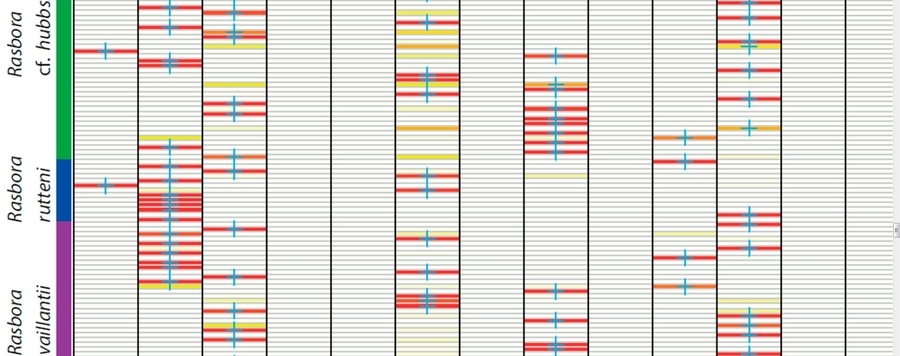
On the Challenge to Correctly Identify Rasboras
Abstract: Within the subfamily Danioninae, rasborine cyprinids are known as a ‘catch-all’ group, diagnosed by only a few characteristics. Most species closely resemble each other in morphology. Species identification is therefore often challenging. In this study, we attempted to determine the number of rasborine species occurring in samples from the Mesangat wetlands in East Kalimantan, Indonesia, by using different approaches. Morphological identification resulted in the distinction of five species (Trigonopoma sp., Rasbora cf. hubbsi Brittan, 1954, R. rutteni Weber and de Beaufort, 1916, R. trilineata Steindachner, 1870, and R. vaillantii, Popta 1905). However, genetic species delimitation methods (Poisson tree processes (PTP) and multi-rate PTP (mPTP)) based on DNA barcodes and principal component analysis (PCA) based on homologous geometric morphometric landmarks, revealed a single cluster for Trigonopoma sp. and R. trilineata, respectively, whereas the remaining traditionally identified species were distinguished neither by DNA barcodes nor by the morphometry approach. A k-mean clustering based on the homologous landmarks divided the sample into 13 clusters and was thus found to be inappropriate for landmark data from species extremely resembling each other in morphology. Due to inconsistent results between the applied methods we refer to the traditional identifications and distinguish five rasborine species for the Mesangat wetlands.






